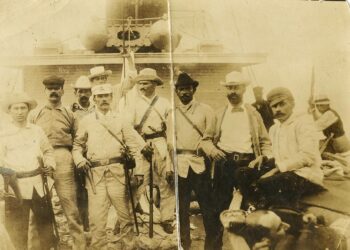“In the Caribbean we have lot of sun and clarity. Caribbeans are filled with Eros, even in their way of sitting. We are not Europeans, nor Asians, nor Africans; we are a wonderful mixture and that has to be portrayed in dancing. We can never forget our voluptuousness, our light”, stated the Cuban National Dance 2001 Award, Eduardo Rivero Walker.
He perfectly knew what he was talking about. He danced all over the world and he showed it in famous pieces Súlkary and Okantomí, by the Danza del Caribe Theater Company, in 1988, in Santiago de Cuba.
Ogun’s machete and Chango’s ax clashed in the struggle in the piece Suite Yoruba. The sharp metal shone. Rivero’s arm is the branch of a tree moved by a hurricane. The documentary Historia de un ballet (1962) by José Massip marked that jump as an iconic image of Cuban dancing.
Perhaps his love for cave paintings from the Sahara, wood sculptures, masks about the times of free Africans, prior to the disgrace of slavery, dates back to that epoch.
Dancing is not about muscles, but the spirit. It is not just a technical performance, but a whole creative process where research is the substratum of history. That’s the philosophy the artist spread among the group during daily rehearsals and during tours through the United States, Ibero-America and the Caribbean.
Rivero Walker’s passing away in 2012, was a huge loss, and yet the company moved on based on his legacy. The aesthetic line is still focused on contemporary dancing with deep Afro-Caribbean roots.
Heredia Theater.Maceo’s giant statue is sticking out from a window. The new generation of dancers is rehearsing but I can also see those who are no longer there: Yamilia Prevals and her endless expressiveness; Darwin Matute and his intense lyricism, Arturo Castillo, very nervous; Michael and his deluxe anatomy…
However, there is recent good news: the musical group of the company was finally filled. Live music, dialogues on the stage.The premiere of pieces Almas mariposas —choreography by Argentinean Gabriela Fabro, a song for love without barriers―; as well as Un pedazo de tela blanca or Amor, both by Ramón Ramos, reveal a search in an endless spring of creation. It is Barbara Ramos’ —dancer and choreographer―, turn to maintain the levels accomplished and the identity of Teatro de la Danza del Caribe. It is not an easy task; she’s got fire in her eyes.
I can hear them coming. They are already here. Maestro Rivero is right: Caribbeans are filled with Eros…










